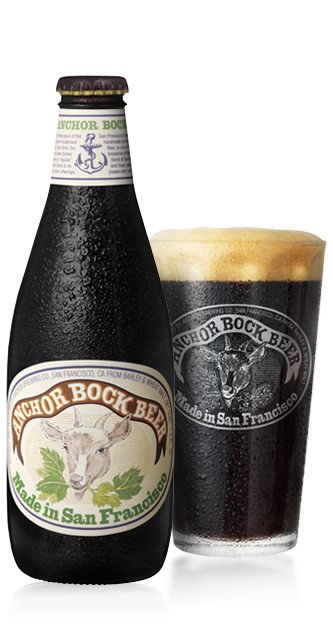Review: Anchor Bock Beer (San Francisco)
/Beer: Anchor Brewing “Anchor Bock Beer”
Style: Bock
Spring is just around the corner and I am ready. I’m obviously not alone. Brewers are beginning to releases their late winter/spring seasonals and this means it’s bock time. Bock has a long brewing history, probably dating back to the mid-13th century where in the Einbeck region of Germany brewers, members of the Hanseatic League, a trading league of medieval merchants, produced a rich, dark strong ale brewed in late November early December and released for trade in February. This ancient version of the style, more than likely a dense, rich top-fermented strong ale (8% abv (alcohol by volume) or more) rather than a bottom-fermented lager of the modern version (lagering and lager yeasts had yet to be discovered in the 1200s), was a popular dietary supplement released in late winter when food stocks were low and fortified the diets of the people while spring crops were coming to maturity. Over the course of the 14th and 15th centuries the beer grew in popularity and the tax revenues from the beer became a staple of royal economies. So profitable was the beer that other brewers angling for piece of trade copied the style and by the 1600s bock had become a regional speciality throughout Germany creating the various and often confusing sub categories of the style (Weihnachtsbock (Christmas bock), Doppelbock (double bock), Dunkelbock (dark bock), Eisbock (ice bock), Fastenbock (a Lenten bock), Frühlingsbock (spring bock), Maibock (May bock a Bavarian spring bock), Winterbock, etc…).
Like with many of the traditional European styles, American craft brewers have adopted bock and created their own modern versions to suit American craft beer drinkers tastes, and while they maintain some of the traditional aspects of the style they are uniquely American in their flavor profile. These bocks, available from mid January until late May, use domestically grown malts and hops making the American bock slightly more aggressive in its hop profile, but still managing to maintain the traditional full-bodied mouthfeel and rich malty sweetness the style demands. American bocks are incredibly easy to drink beers, deliciously rich and unchallenging, making them a perfect way to get those who find hop bitterness unpleasant hooked on craft beers.
Anchor’s version of the bock style simply called “Anchor Bock Beer,” is a perfect example of the American style bock. Anchor Bock features a malt bill that includes American grown two-row, caramel, chocolate, and munich malts with a bit of wheat added to the mash, resulting in a full-bodied beer that reveals rich aromas and flavors of chocolate, and coffee, a toffee/caramel like sweetness and a hint of bitterness brought on by the fresh whole Nugget and Glacier hops, which provide the beer with a nice spicy, herby and woody hop aroma and bitter finish.
At 5.5% abv, Anchor Bock is quite light for the style and quite drinkable. It is also food friendly and, given its history as a late winter treat, works extremely well paired with roasted meats (lamb and pork especially), grilled sausages, and its sweetness works particularly well sharp aged cheeses (cheddar, stilton, tomme), and it pair particularly well with raw milk gruyere, munster or Allgäuer Emmentaler, desserts, and smoked and preserved meats. In fact, tonight I’m pairing it with a rich hearty chicken and andouille gumbo to celebrate Fat Tuesday and ring spring in with style.
Photo from Anchor Brewing Co. (http://www.anchorbrewing.com/beer/anchor_bock)

